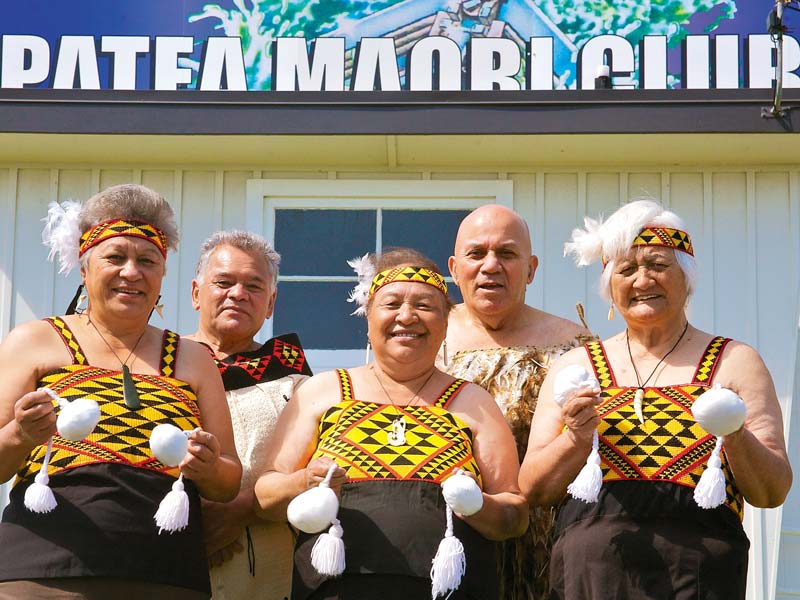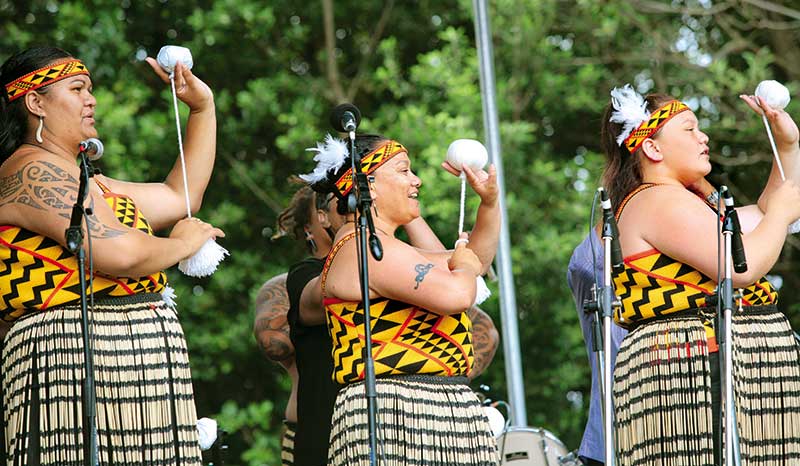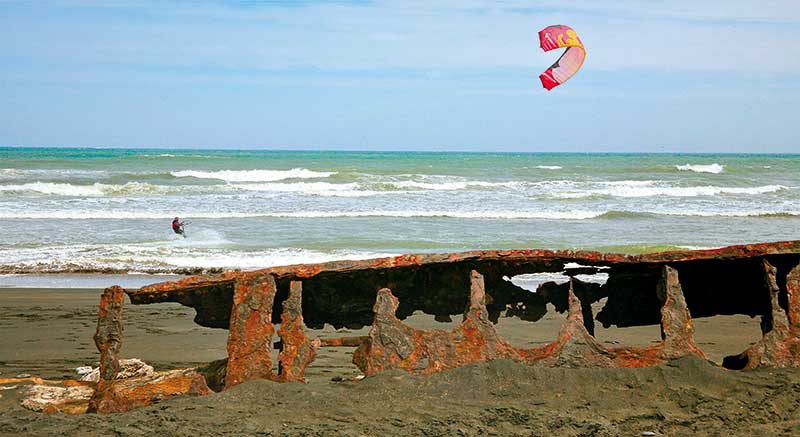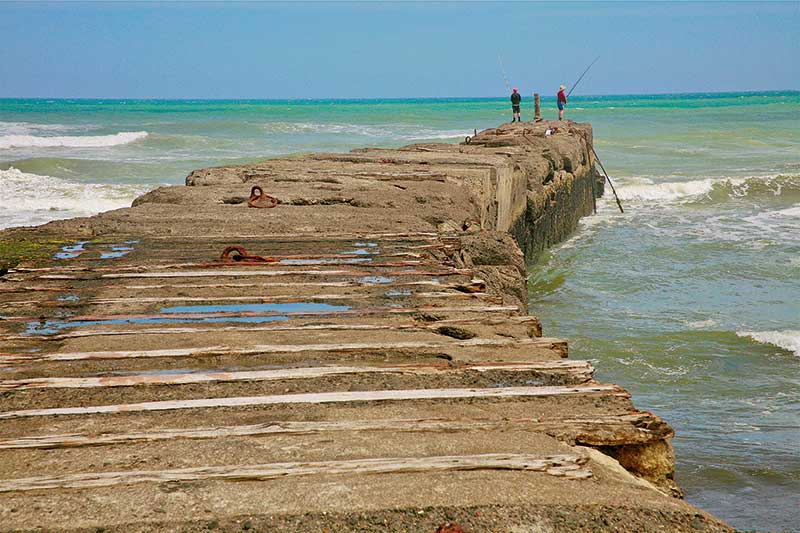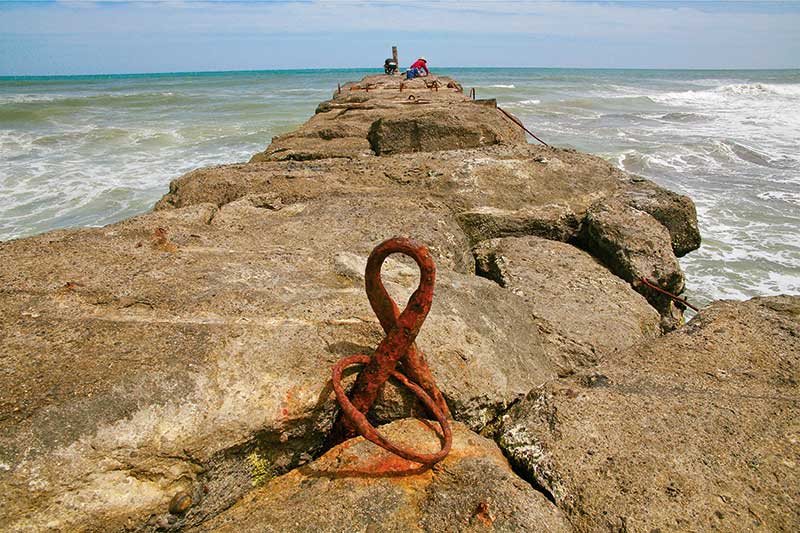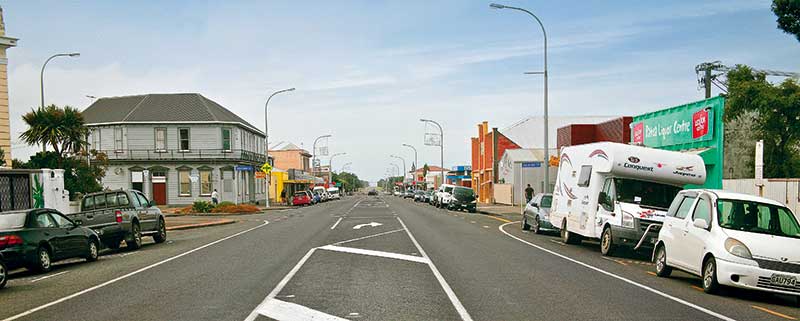Mention Patea and the first thing that springs to mind is the Patea Maori Club and Poi E, that catchy mix of Maori music and breakdancing that defined the 1980s in Taranaki and New Zealand.
Born out of the social trauma resulting from the closure of the town’s largest employer, the freezing works, the Patea Maori Club was a way of keeping the local Maori population positive, all of whom worked at the plant – including Dalvanius Prime, the group’s mentor and leader.
Few of those original performers thought that the group would have such an impact on the music scene in New Zealand but with the release of Poi E in 1984, the Patea Maori Club became a household name.
Most people will be familiar with Poi E but not so much Patea itself. Once the town boasted a population of over 1000. Today that number has halved and, along with the loss of the freezing works and later the hospital and primary school, Patea fell into rapid decline. Businesses closed and houses remained unsold and unwanted as their owners moved away.
But Patea refused to die as stalwart residents looked for other attractions to keep the town alive. Today there are more than enough diversions to fill a day comfortably.
Things to see and do in Patea
Between the new signs SH3 becomes Egmont Street, the main drag of town. The best way to experience Patea is a walking tour starting at the iconic memorial of the Aotea Waka. Unveiled in 1933, the memorial is a life-sized representation of the Aotea Waka commemorating the settlement of the district in the 14th century by Turi, his wife Rongorongo, and their hapu.
Originally, the memorial was the gateway to the town hall but it has since been demolished. The area behind it is now a small park used each year for the local Waitangi Day celebrations called ‘Paepae in the Park’. Now in its 12th year, the festival showcases popular New Zealand music acts including the Patea Maori Club.
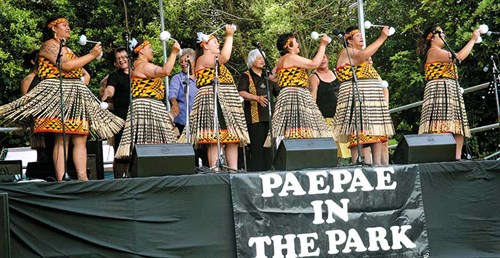
Heading south from the memorial, I arrived at the Albion Hotel, not too far from the Central and the Masonic hotels. Typical of old-style country hotels, you can see the history in the weathered exteriors and quaint architecture. The Albion itself is over a century old. All three are now private residences and no doubt lovingly cared for.
Another public building serving as a private residence is the distinctive art-deco styled Patea Post and Telegraph Office with its exterior embossed fretwork and interior pillars while nearby, the old courthouse has morphed into a craft shop.
Fortified with a delicious spearmint milkshake from the Red Rock Cafe, I headed down the hill towards the bridge that crosses the Patea River. A side road on the right brought me to a picnic area opposite the ruins of the Patea Freezing Works cool stores and the decayed piers and decking of the wharf. Combined with the mud flats in the foreground, the whole scene looked depressingly abandoned and derelict. Perfect fodder for creative landscape photography I thought at the time.
Returning back to the main street, this time on the opposite side of the road, I popped into the clubrooms of the Patea Maori Club, a handsome building with the familiar black, orange and red triangles and colourful mural on its exterior. Inside, the group’s gold records and awards are on display as well as archival photographs of their achievements over the years.
At the top of the hill is another sculpture that, in my opinion, rivals the Aotea waka at the other end of town. Called Tutunui’s Garden, the centrepiece is a whale skeleton with a child’s swing at one end. In reality the skeleton is made from foam and covered in fibreglass. A storyboard in front of the sculpture outlines the story of the whale and the proverb it illustrates.
Across the road from the whale sculpture is the gothic St George’s Anglican Church with its ornate steeple and distinctive triangular architecture. Built in timber in 1885 and painted white with a grey roof, it is a handsome church, another example of well-maintained and historic buildings that seem to proliferate in Patea.
There are no longer any banks in Patea but at the former ANZ Bank building I came face to face with the reality of Patea’s freezing works’ past. A life-sized model of a slaughterman is about to skin and dress a newly killed carcass while a group of penned sheep await their fate nearby. In the background you can see the chain system that operated when it closed.
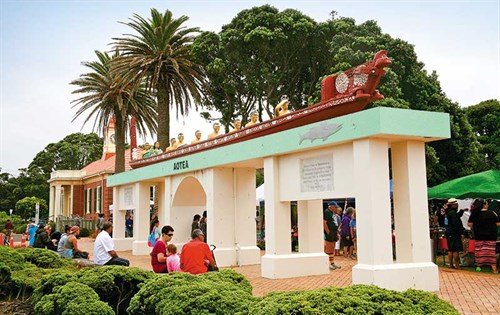
For most of us, meat is something we get at the supermarket all nicely cut and wrapped in plastic. This display reminded me of where it actually comes from and, as a non-meat eater, I found it very sad and certainly not a career choice I would have made pre 1982.
I admire people who live their dream. A little further along the street is the Star Garage and the inspirational Jim Baird and his mate Ted the dachshund. The huge interior of the former garage is now Jim’s workshop, home, and the beginnings of a mini car museum to display his 20 or so classic and vintage cars. The shell-encrusted Austin, a prop used in the Billy T James movie Came a Hot Friday held centre stage as well as other eclectic vehicles including a bonnet on one in the shape of a hand writing with a pencil.
Jim can often be seen sitting in the street outside his ultimate ‘man cave’ and welcomes visitors in for a look around and a chat. I suspect for some people that could be a long visit.
A few doors down from Jim’s mini museum there is another museum at the other end of the scale, the Aotea Utanganui-Museum of South Taranaki. Formally known as South Taranaki District Museum, it closed in 2008 and re-opened in 2011 after a million-dollar redevelopment. The museum centres on the history of the area both Maori and European. For me, the highlight of my visit was the old photographs of the freezing works from the 1930s and ’40s.
The rest of my day in Patea was spent shooting formal promotional photos of the Patea Maori Club following their ‘Paepae in the Park’ performance.
I still had a couple of hours to go before heading home so I decided to visit Patea Beach, a place I had heard a lot about but had never actually been to. Apparently it can get rough down there at times but today it was a sweltering calm high summer’s day and the beach was crowded. There was all manner of activities going on from jet skis and jet boats on the river, board and wind surfers, fishermen at the end of the seawall, kids sliding down a sand dune, and dozens of people swimming and beach combing.
My own personal highlight at the beach was the art installation Te Au Hou – The New World showcasing two intertwined anchors, one from a sailing ship, the other a Maori anchor stone from a waka. The art represented the joining of two cultures in New Zealand and their connections to the sea.
My other highlight was the rusting shipwreck of, appropriately, the SS Waitangi that ran aground here in 1923. Shifting sand had almost buried it but occasionally a storm surge will leave it fully uncovered.
Like many small towns in New Zealand, Patea has suffered its fair share of economic ill wind yet it has a contagious air of positivity. It may appear to be dying yet it is far from dead. I am sure the poi will continue to swing for many more years yet.
Never miss an issue of Motorhomes Caravans & Destinations magazine. Subscribe here.

